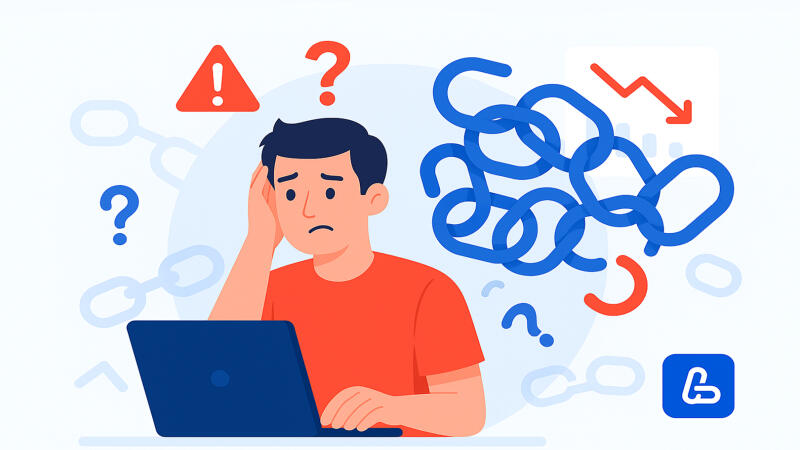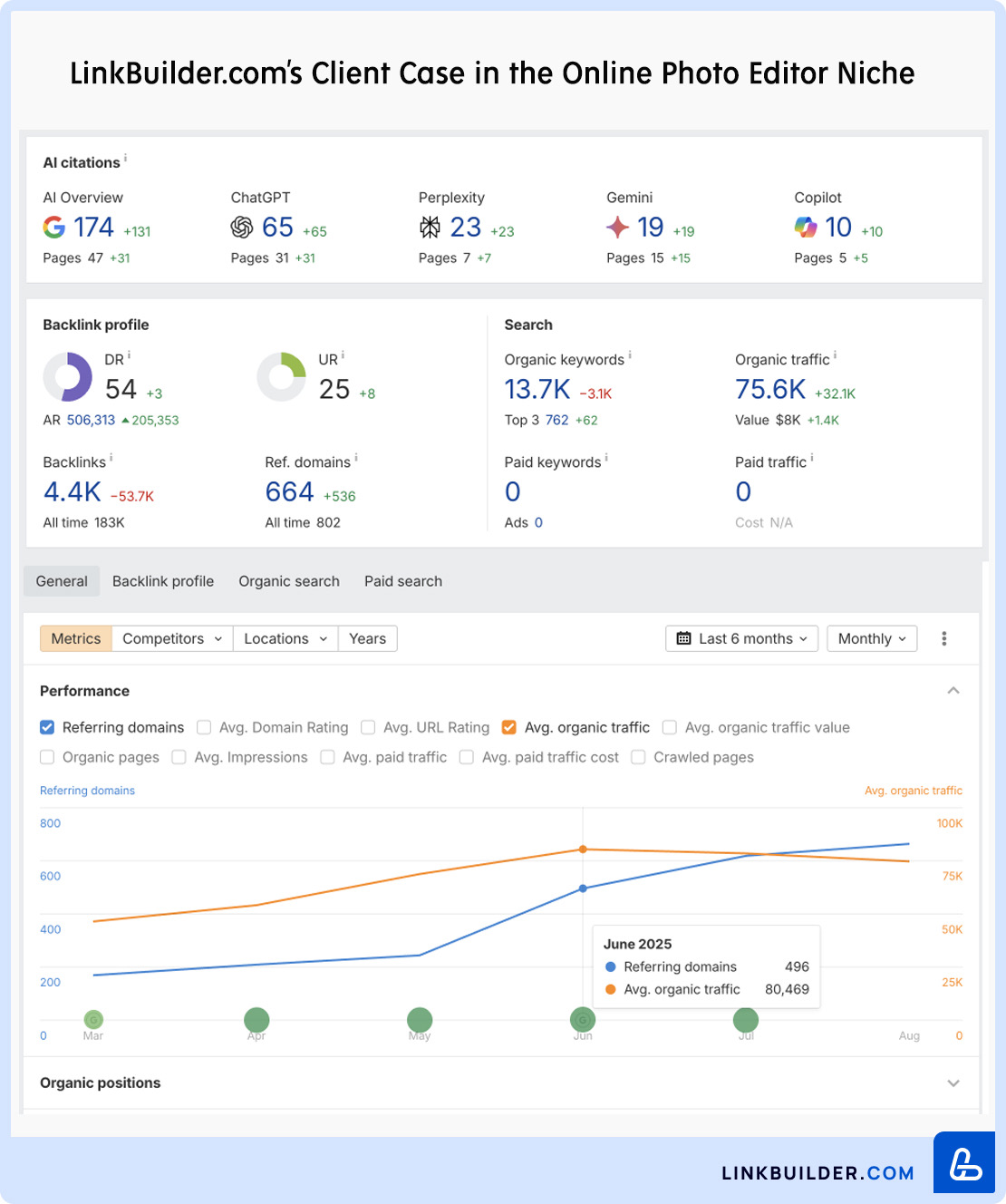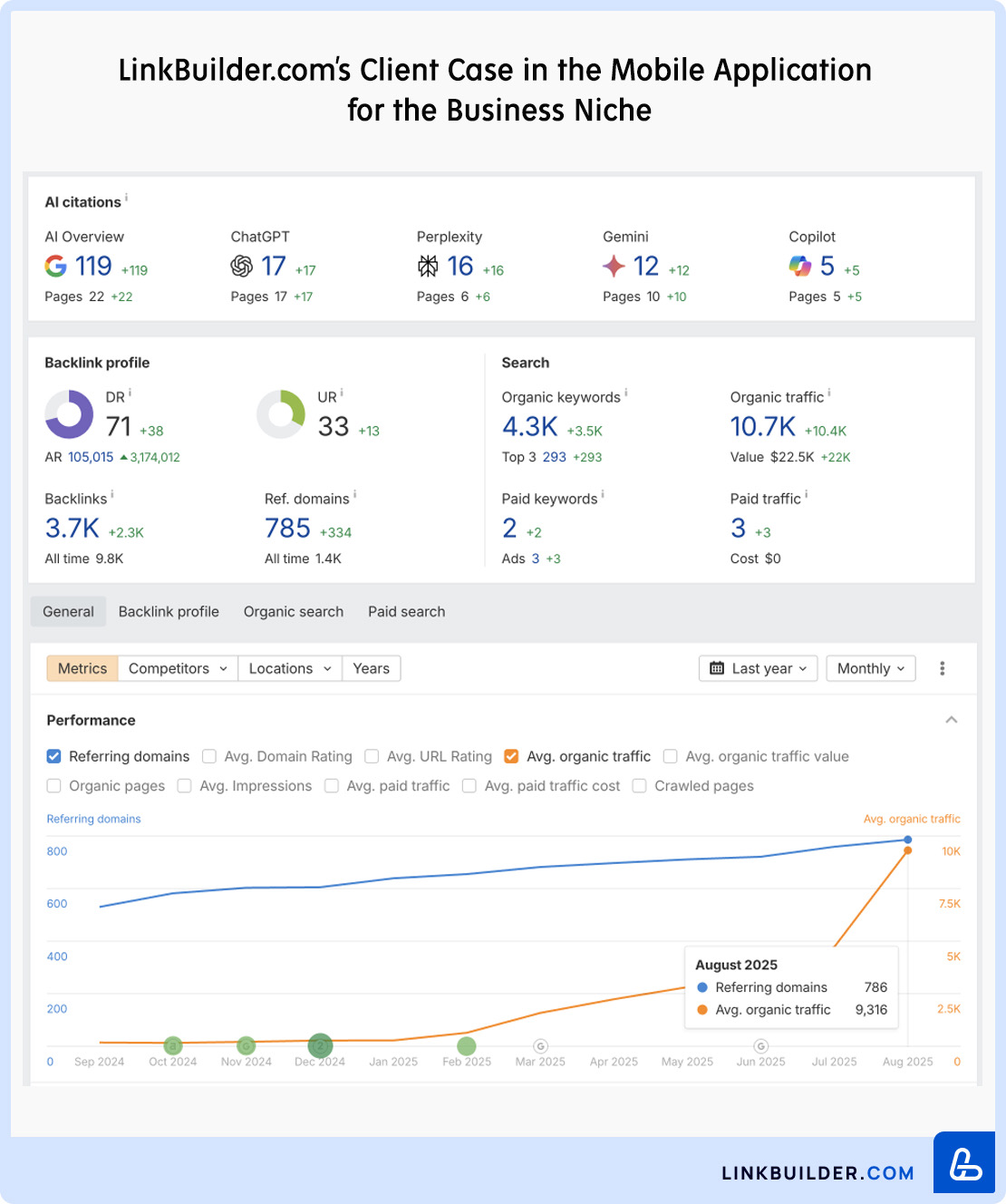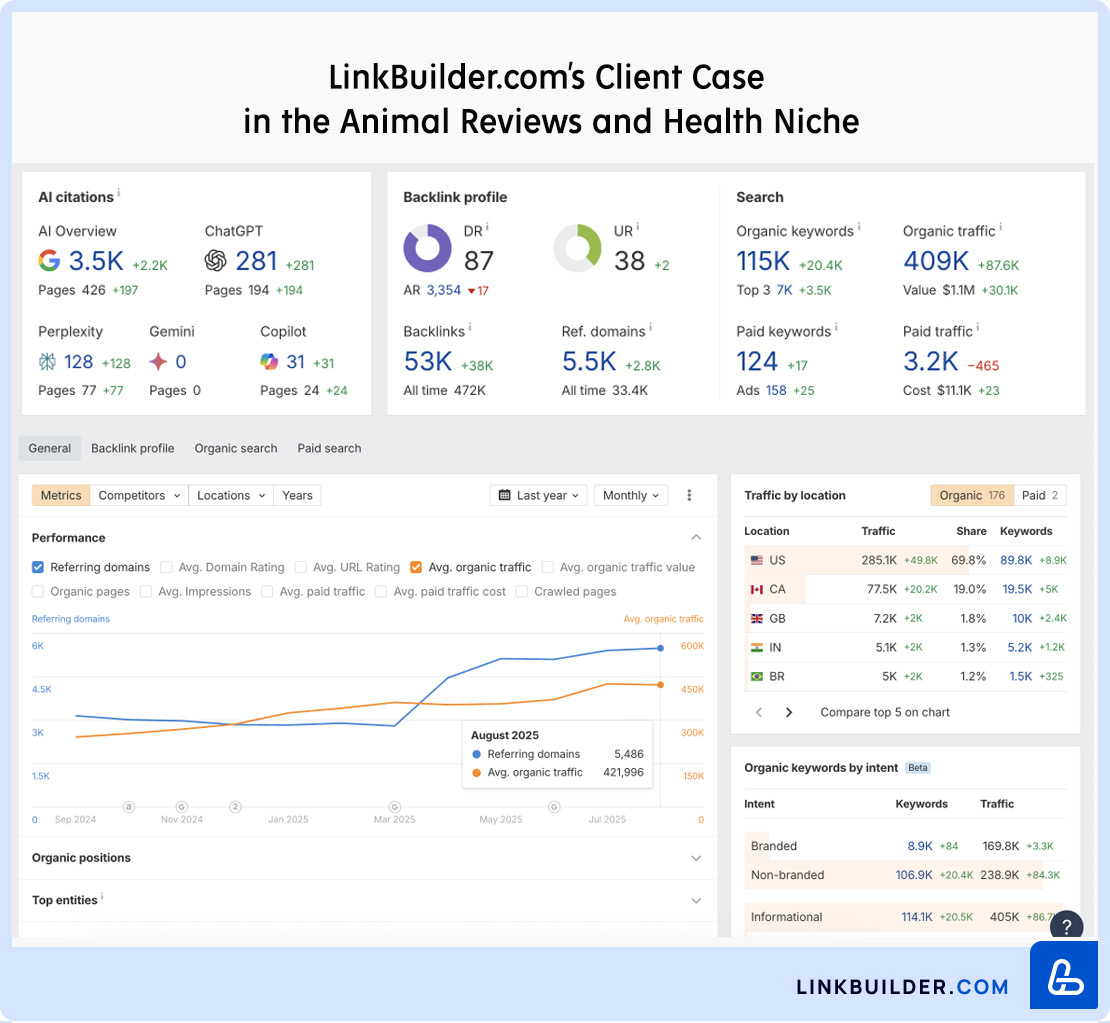Link building remains one of the key factors in SEO. Backlinks help search engines evaluate site authority, discover and re-crawl pages faster, and distribute link equity across documents. Even with the growing importance of behavioral and content signals, it is difficult to compete in search rankings without a strong backlink profile. In this article, we’ll explore why link building has become harder in 2025, what common link building challenges agencies and businesses face, and which methods help overcome them.
What Is Link Building?
Link building is the systematic process of acquiring high-quality backlinks to your website from relevant sources. For Google and other search engines, backlinks are a strong signal of trust and authority: they accelerate crawling and indexing, confirm topical relevance, and distribute link equity across your pages. Even as behavioral and content factors evolve, without a solid backlink profile it’s nearly impossible to maintain rankings for competitive queries – which is why link building challenges remain highly relevant today.
According to industry research, 85% of websites on Google’s first page have backlinks from at least 1,000 domains, and 60% from 10,000 or more. This indicates that top rankings are often supported by a large and diverse backlink profile.
Why Link Building Problems Have Intensified in 2025
- Stricter algorithms. Frequent updates, anti-spam systems, and tougher quality guidelines have reduced the impact of “quick win” tactics while penalizing templated link buying. Manual and algorithmic filters are growing, which increases link building difficulties.
- More competition. In commercial niches, nearly every player runs active outreach and digital PR. To secure a link from a strong domain, you need to provide real value – expertise, unique data, or exclusive insights. This raises the bar for scaling campaigns and adds link building obstacles.
- Rising costs. Placement fees, content production, and outreach costs have grown, while editorial standards have become stricter. Achieving the same results now costs far more than two or three years ago – one of the main reasons for link building issues.
- Shortage of relevant sites. In narrow niches, the pool of suitable link donors dries up quickly. Teams have to expand into adjacent topics, work with data-driven studies, or build partnerships – all of which require significant resources.
- The human factor. Poor prioritization, generic outreach emails, weak content hooks, and lack of donor quality criteria are typical link building mistakes. Even with active efforts, campaigns may fail: links are placed, but they don’t improve rankings or organic traffic.
As a result, common link building problems are no longer just about “finding sites.” They also involve strategy, campaign economics, audience intent alignment, and the ability to package a story into a link-worthy pitch. That’s why the question of how to do link building effectively in 2025 goes far beyond donor research – it includes content engineering, PR, and partnership marketing.
What to Expect Next in This Article
Below, we’ll break down the biggest barriers to link building growth and share actionable advice: how to solve link building challenges, avoid common mistakes, and what to do if your strategy has already failed. The goal is to turn scattered efforts into effective link building solutions that withstand algorithm updates and tough competition.
Why Link Building Got Harder: Top 10 Link Building Challenges and Solutions
Link building has always required resources and strategy, but by 2025 it has evolved into a “mature” discipline where only the strongest survive. Below are the main link building difficulties and practical ways to overcome them.
| № | Challenge | The Problem | Solution |
|---|---|---|---|
| 1 | Stricter Google algorithms | SpamBrain and other filters catch manipulative tactics more accurately. | Regular backlink audits, diversified link types, work only with trusted domains. |
| 2 | Rising competition | In niches like finance, health, and SaaS, dozens of players fight for each publication. | Explore related topics and regional sites, create unique content hooks. |
| 3 | Increasing link costs | Prices for DR 50+ guest posts have grown 20–40%; in top-tier media, costs have doubled. | Focus on research-driven content, original data, collaborations; invest in unique assets. |
| 4 | Lack of quality sites | In narrow industries, good websites are flooded with pitches and access is limited. | Use crowd marketing, niche blogs, and build long-term relationships with editors. |
| 5 | Higher content quality requirements | A generic “SEO article for a backlink” no longer works. | Prepare expert-level articles with analytics, research, and infographics. |
| 6 | Difficulty evaluating donors | DR/DA alone is no longer enough; you need to check organic traffic, spam score, and relevance. | Donor evaluation checklist: DR, organic visibility, topic relevance, domain history (Wayback Machine). |
| 7 | Stronger role of branding | Without a strong brand, even high-quality links bring limited results. | Build Digital PR, HARO pitches, social presence, expert columns, and public speaking. |
| 8 | Slow outreach process | Editorial replies take weeks; campaigns drag out. | Personalize emails, pitch ready-to-publish ideas aligned with editorial calendars. |
| 9 | Local competition | Regional outlets get dozens of placement requests daily. | Experiment with creative formats (case studies, research) and develop local partnerships. |
| 10 | Natural profile requirements | Over-optimized anchors or sudden spikes in link growth trigger filters. | Use branded and non-anchor links, scale gradually, mix traffic sources. |
These factors show that modern link building demands far more resources and expertise than just a few years ago. But with a systematic approach, these link building struggles can be turned into a strategic advantage.
How to Avoid Link Building Mistakes
Even experienced specialists make mistakes, and for beginners, link building often looks like a random set of actions: buying a few links on a marketplace, publishing a couple of guest posts, and waiting for miracles. The result: budget is burned, but rankings don’t move. To avoid this, you need a systematic approach.
Top 5 Critical Link Building Mistakes
- Anchor text over-optimization. Excessive use of commercial anchors is one of the most common link building problems.
- Relying solely on link marketplaces. Buying links in “one place” without outreach and natural mentions makes your profile unreliable.
- Irrelevant donors. Links from off-topic websites add little value – and may even reduce trust.
- Ignoring competitor analysis. Without understanding which strategies work for industry leaders, you’re flying blind.
- Disregarding Google updates. Using outdated link building tactics risks penalties and filters.
A Systematic Checklist for Safe Link Building
- Define your goals. Be clear: why do you need backlinks? To grow search rankings? To drive referral traffic? Or to strengthen brand authority? Your answers will determine the choice of platforms and anchors.
- Build an anchor map.
- Don’t overload your profile with commercial anchors. Maintain balance between:
- branded mentions,
- non-anchor links (URL, “here”, “read more”),
- commercial keywords.
- Choose donors wisely. Evaluate DR/DA, organic traffic, relevance, and site geography. A link from a niche-specific blog is far more valuable than one from a random portal.
- Check domain history. Use Wayback Machine and backlink checks via Ahrefs. If a site was once a spam farm or under penalties, a backlink from it can hurt you.
- Monitor link velocity. Links should appear naturally. Sudden spikes look manipulative, while steady and consistent growth helps avoid link building problems.
- Analyze results. Track rankings, traffic, and backlink dynamics via Ahrefs, Semrush, or Serpstat. If certain donors don’t deliver, reallocate your budget.
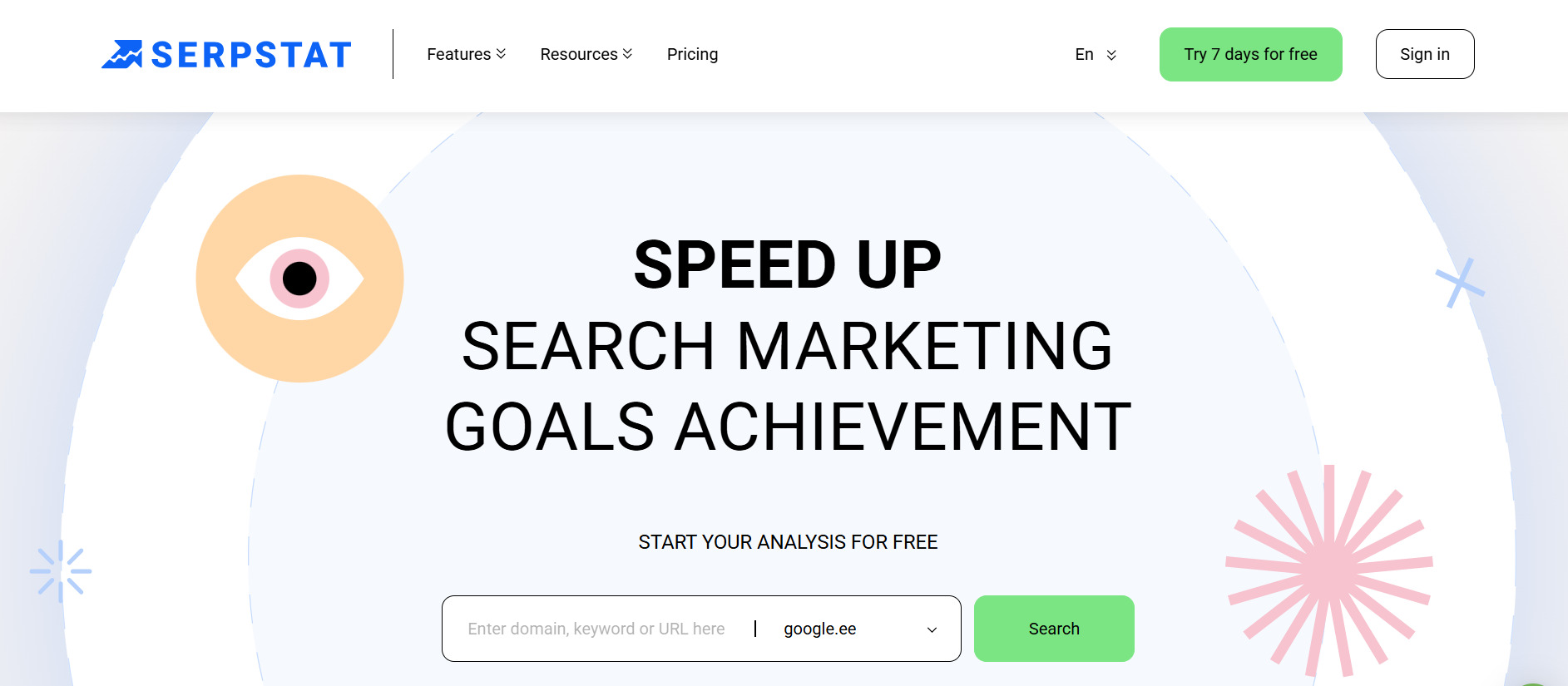
Link Building Tips from Real Cases
- Finance niche (loans)
- SaaS project
- E-commerce
Takeaway: a systematic approach to link building not only helps avoid “fatal” mistakes but also ensures predictable growth in rankings, traffic, and revenue.
Methods to Solve Link Building Challenges
By 2025, buying links alone is no longer enough. Google’s algorithms have become smarter, and competition is tougher. To solve link building problems and avoid filters, you need a systematic approach that combines content, outreach, and PR.
- Content Marketing – the Foundation of Strategy
- Research and analytics. Data-driven reports are cited more often than generic articles.
- Evergreen content. Guides, reviews, and long-lasting resources that remain relevant.
- Infographics and checklists. Frequently reused by other sites, generating natural backlinks.
- Link bait content. Materials that naturally “invite” citations: unique data, studies, curated lists.
- Outreach and Networking – Relationships Work Better
- Personalized emails to bloggers, editors, and site owners.
- Segmentation: treat media, blogs, and influencers differently.
- Real-life networking at conferences and online communities builds trust that money can’t buy.
- Guest Posts and Collaborations
- Find opportunities via Google, Ahrefs, or Semrush.
- Pitch expert-level content: research, interviews, practical guides.
- Co-publish with brands and niche experts.
- PR Links and Media Mentions
- Press releases for product launches, events, or research.
- Expert commentary through HARO or Qwoted.
- Personal quotes from thought leaders in your field.
- Communities, Forums, and Q&A Platforms
- Participate in discussions on Reddit and Quora.
- Be active in niche social media groups.
- Write detailed, useful answers where a backlink looks natural and relevant.

Takeaway: strong link building in 2025 = a mix of strategies. Content attracts attention, outreach and collaborations expand reach, PR builds trust, and community activity creates a natural background of mentions. Together, they form a unified mechanism that minimizes link building risks and maximizes results.
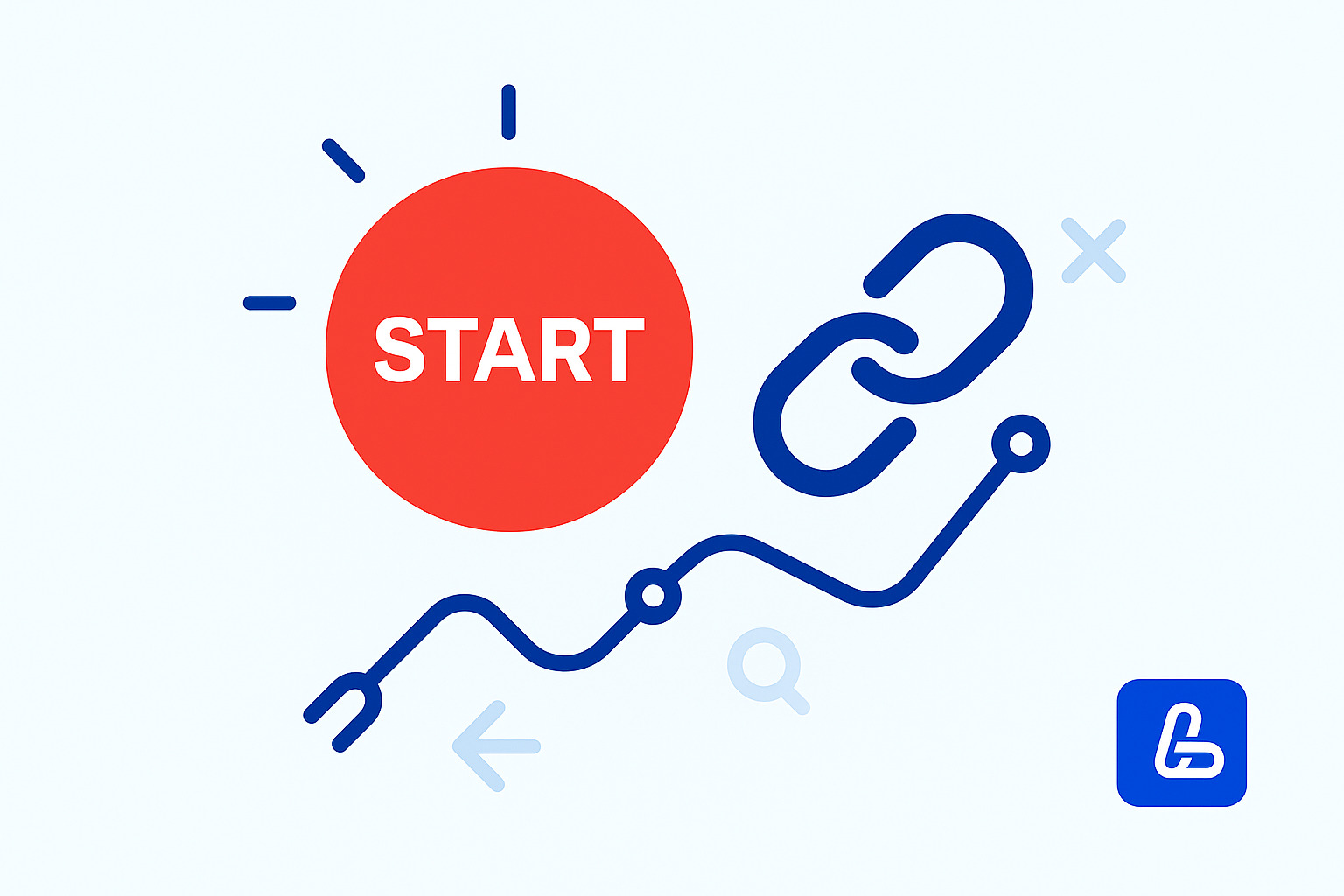
Link Building for Beginners: Where to Start and How to Overcome Challenges
The beginning is always the hardest. Your first 30 days determine whether you’ll make link building mistakes or set up a system that works long-term. Below is a step-by-step plan that helps avoid typical link building problems and shows how to do link building right from day one.
Week 1 – Laying the Foundation and Setting Priorities
- Define your 90-day goal: grow the number of referring domains, increase traffic, or boost specific pages.
- Run a quick backlink audit: highlight strong URLs and weak spots.
- Collect a list of “assets” worth linking to – research, guides, calculators, comparison articles.
- Identify your first 100–150 relevant prospects: blogs, media outlets, directories, communities.
- Prepare 2–3 “link magnets” for outreach: a mini study, checklist, or expert guide.
At this stage, you’re already reducing link building challenges by working with a clear plan instead of random actions.
Week 2 – Preparing Outreach
- Collect editor and author contacts, mark relevant sections where your content fits.
- Write three outreach pitch types: guest post, content update, and expert commentary.
- Develop 5–7 guest post topics with short outlines.
- Draft two polite follow-up templates.
- Set up tracking: a sheet with columns “domain – contact – status – date – reply – link.”
The most common beginner mistake is mass-sending templates. Personalization and careful tracking instantly reduce link building difficulties.
Week 3 – First Outreach and Quick Wins
- Send 30–40 personalized emails (avoid blasting hundreds at once).
- Try “content updates” – improve existing articles with fresh data and a link to your source.
- Secure your first legitimate links from directories or partner pages.
- Join 2–3 forum or Q&A discussions with valuable comments and a natural backlink.
These steps help overcome common link building problems at the start, giving you tangible results and motivation.
Week 4 – Scaling and Improving
- Analyze editor responses: which pitches worked, which didn’t. Adjust accordingly.
- Expand your donor list by another 100 sites and categorize them (media, blogs, communities).
- Publish your first 2–3 guest posts: one quick and one flagship.
- Summarize results: new domains acquired, promising platforms, what to improve in the next cycle.
By this stage, you’ll begin to understand how to overcome link building challenges in your niche and which strategies work best for you.
Mini-Goals for the First Month
- 2–5 new domains.
- 60–120 quality contacts.
- 1–2 guest publications.
- 2–3 quick community mentions.
These are realistic benchmarks that remove the chaos and show that effective link building is built step by step.
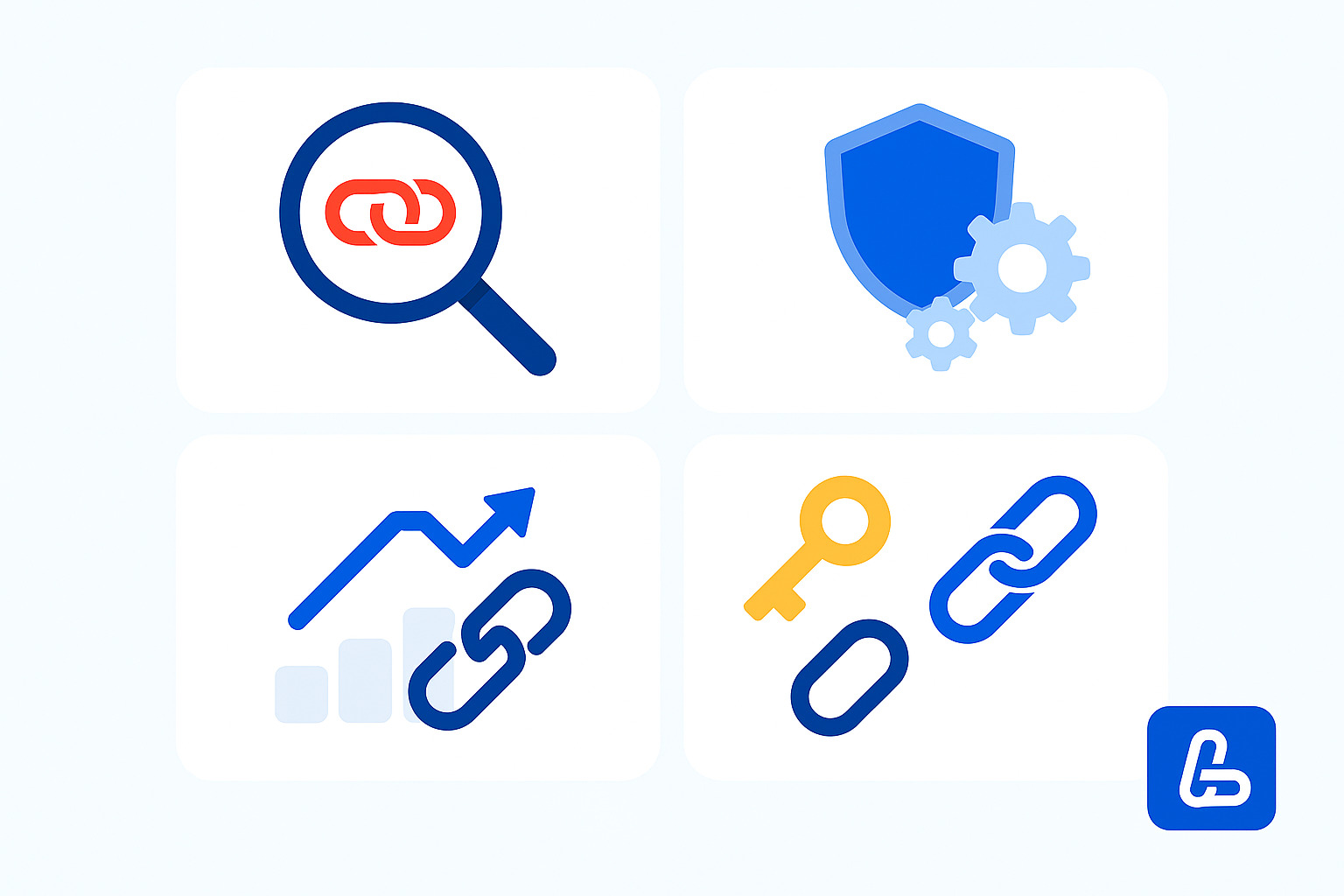
Essential Toolset for Beginners
You don’t need a huge budget or dozens of tools to get started with link building. A basic stack is enough to cover key tasks:
- Prospecting & evaluation.Ahrefs or Semrush (or free alternatives) to check DR/DA, traffic, relevance. Google Sheets or Notion for database storage.
- Outreach. The key is to find working emails and send from your own domain. A couple of email-finding tools plus simple templates are enough.
- Content. Google Docs for texts, Canva/Figma for visuals, plus a publication calendar.
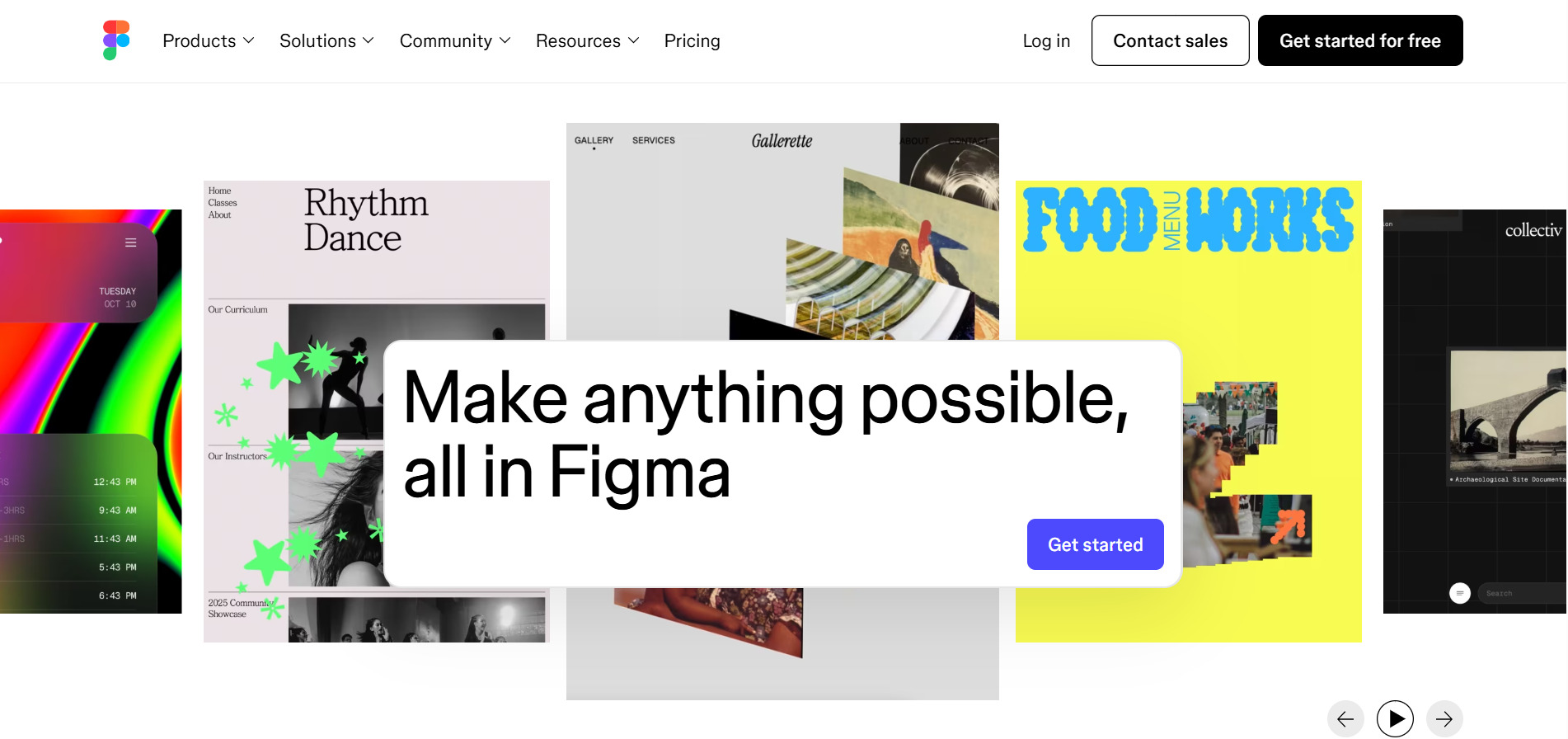
- Monitoring.Google Search Console for indexing and rankings, UTM tags to track referral traffic.
This minimal stack is sufficient to overcome basic link building problems without overspending.
Realistic Expectations
Beginners often expect “quick wins” from link building – and get disappointed. The process actually works like this:
- Timeline. First stable results appear after 6–12 weeks – this is normal. Don’t expect instant growth.
- Conversion. From 100 cold emails, expect replies from 5–15%, and successful placements at 1–5%.
- Costs. Even without buying links directly, you’ll still invest in content and visuals.
- Impact. Not every link drives growth, but the right donor + page combo works as a catalyst.
- Continuity. Backlink profiles should grow steadily. This reduces risks and solves many link building issues over time.
Quick Checklist: How to Overcome Link Building Challenges
- One content cluster → multiple formats → different link types.
- Prioritize quality of sites and content (70%) over quantity of emails (30%).
- Update donor lists every two weeks to remove low-value prospects.
- Personalize every pitch – one template for dozens of editors ≠ effective.
- Log failures and learn from them – outreach experience is more valuable than theory.
- Use communities and partnerships as quick channels for early links.
Conclusion: Beginners almost always face link building problems, but with a systematic approach they stop being chaotic. Within a few months, the process becomes predictable: you’ll know which platforms deliver results in your niche and how to improve your strategy.
Which Tools Help Overcome Link Building Challenges?
Tools are not about pretty graphs – they’re about systematically solving link building problems, understanding why link building is hard, and spotting growth opportunities for effective link building. Below is a proven stack with real scenarios that help fix link building issues, avoid common mistakes, and improve the process long-term.
Ahrefs, Semrush, Serpstat – Backlink and Niche Analytics
Key tasks these tools cover:
- Prospecting and evaluating donor quality – the foundation of how to do link building right.
- Identifying link gaps and “quick wins” – practical methods for solving link building problems.
- Monitoring backlink dynamics and risks – staying in control of SEO link building difficulties.
Typical use cases:
- Competitor gap analysis. Enter 3–5 competitors + your domain → see who links to them but not to you. Filter by traffic, relevance, DR/DA. Outcome: a priority donor list for outreach – a hands-on answer to how to overcome link building challenges in competitive niches.
- Top Pages / Best by Links. Spot competitor pages that attract the most backlinks (research, templates, stats). Create your own equivalent – bypassing link building obstacles through strong formats.
- Broken link building / Link Intersect. Find broken external links → offer your resource as a replacement. Link Intersect shows domains already linking to competitors, making outreach success more likely.
- Batch donor analysis. Run sites in bulk and keep only those with 1K+ monthly traffic, solid DR/DA, and topic relevance. This reduces link building mistakes and saves hours of manual outreach.
Pro tip from LinkBuilder.com: don’t obsess over DR/DA. The real trio is topic relevance + organic traffic + quality of the linking page.
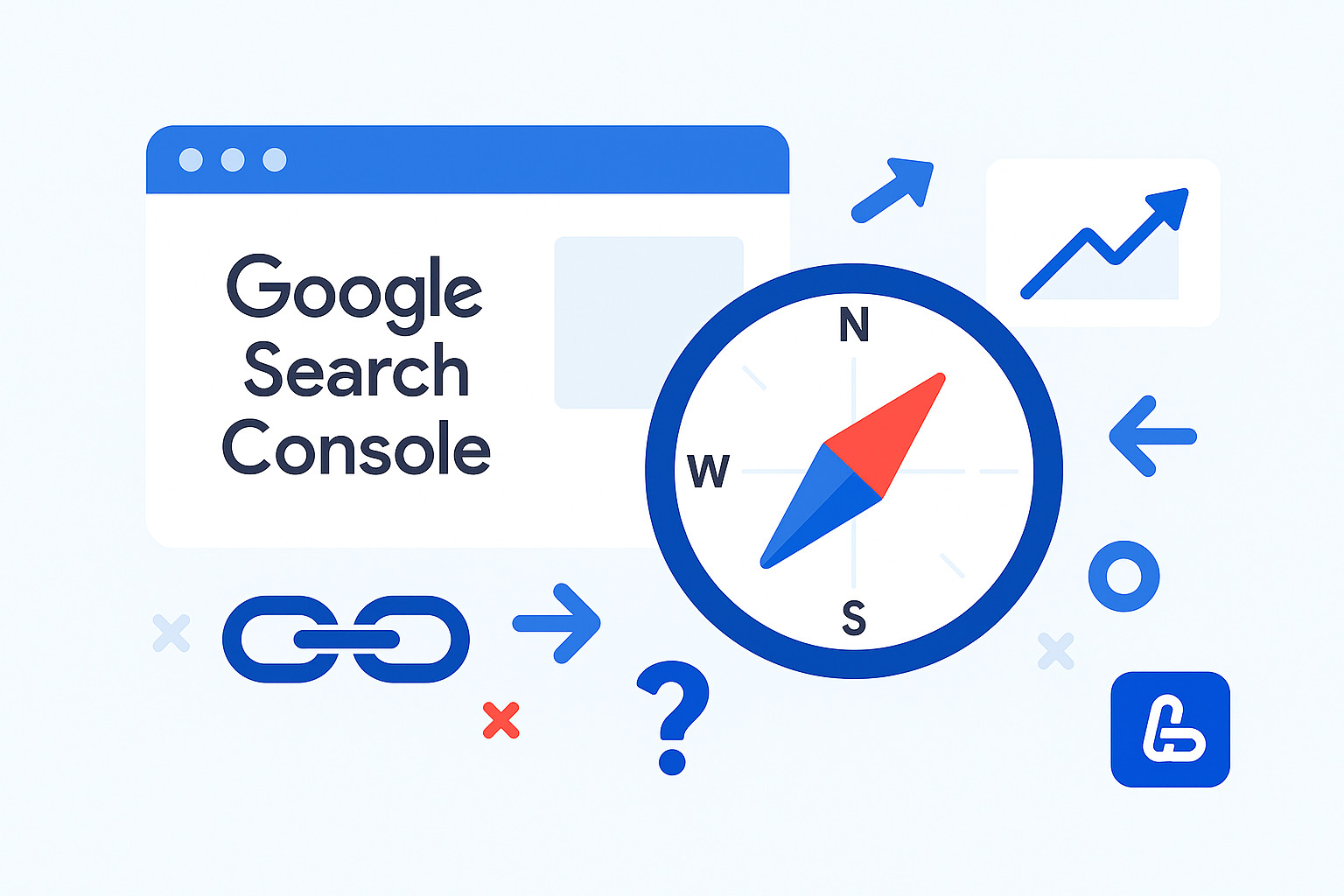
Google Search Console – Your Compass for Demand and Performance
GSC is your “single source of truth” for impressions, clicks, queries, and target URLs. It gives a clear answer to why link building problems happen and how they impact results.
Practical actions:
- Performance → Queries/Pages. Find pages with high impressions but low CTR → add relevant anchors and optimize titles. Queries ranking 8–20 are ideal targets for 2–4 backlinks.
- Links → Top linking sites / Top linked pages. Check who already links to you. Maintain relationships – pitch updates or co-branded content.
- Coverage & Page indexing. Ensure target URLs are indexed quickly. If not, improve internal linking.
GSC shows where to direct efforts to fix link building mistakes and speed up organic growth.

Hunter – Outreach Operations Without the Pain
This tool helps find verified emails, validate them, and automate outreach sequences. Outreach is where most time is lost and where link building difficulties arise.
How it works in practice:
- Finding contacts. Start by checking “About,” “Team,” or “Editorial” pages on donor sites. Save not just emails but also job titles and recent articles – this makes your outreach more personal.
- Verifying addresses. Always validate emails via tools like NeverBounce or Hunter. Keep bounce rate under 5% to protect your domain reputation and avoid spam filters.
- Email templates & sequences. Good outreach = respectful, personalized communication.
- First email: tailored to the recipient (reference their article, comment on their project, make a specific offer).
- Follow-ups: send after 3–4 days and again after 7–10 days if no response.
- Always add UTM tags to track which campaigns generate replies.
- Domain hygiene. Configure SPF, DKIM, and DMARC to prevent emails from landing in spam. Respect sending limits (e.g., 30–50 emails/day per domain initially). These steps resolve technical link building challenges and increase reply rates.
A proper outreach stack turns chaotic emailing into a managed process: less manual work, faster contact discovery, and fewer link building mistakes when scaling.

Success Metrics: What to Measure and Why
If you don’t measure results, link building turns into chaos. To know whether it’s working, focus on 4 key metrics:
- DR (Domain Rating): measures domain backlink strength. Useful filter against weak sites.
- UR (URL Rating): measures authority of a single page – more important for article links than overall DR.
- RD (Referring Domains): the number and growth rate of unique donors.
- Organic traffic: growth in rankings and visits from search – your true North Star metric.
Setting Realistic Benchmarks
- RD: for new sites, aim for 5–15 new domains/month.
- Donor quality: at least 70% of sites with real traffic and topical relevance.
- Anchor distribution: 60–80% branded/neutral, 10–20% partial commercial, up to 10% exact-match.
- UR focus: a strong page-level UR beats a “dead” site with high DR.
How to Organize a Dashboard
- Table: domain, topic, traffic, DR/UR, anchor, target URL, result.
- Chart: weekly RD growth and organic traffic.
- Mark Google updates and your publication dates.
This way you instantly spot signals: when backlinks grow but traffic doesn’t, or when traffic drops without link changes → it’s likely an algorithm update.
Chart: weekly RD growth and organic traffic.
Mark Google updates and your publication dates.
This way you instantly spot signals: when backlinks grow but traffic doesn’t, or when traffic drops without link changes → it’s likely an algorithm update.
What Not to Do
- Don’t chase DR at all costs. One of the biggest link building mistakes is valuing rating over real traffic.
- Don’t accelerate growth with sudden link spikes. A typical reason for link building problems – your profile looks artificial.
Closing the Gaps
- Donor and niche analysis → Ahrefs, Semrush, Serpstat.
- Validating demand and impact → Google Search Console.
- Outreach organization → Hunter, LinkBuilder.com.
- Analytics & reporting → combined DR/UR/RD + organic traffic.
The result: you don’t just “build links for the sake of links” – you create a managed system. This approach helps beginners struggling with link building challenges as well as advanced specialists who want to overcome barriers and make their strategy predictable.
How to Improve Link Building Long-Term
Long-term link building is not about one-off purchases – it’s about building a system: monitoring risks, creating “link-worthy content”, and standardizing the process. Below are three principles that help overcome link building challenges, understand why link building is hard, and build truly effective link building.
1) Monitoring and Removing Toxic Links
Goal: keep your profile natural and manageable, preventing link building problems before they happen.
Step-by-step:
- Weekly backlink snapshots in Google Search Console + exports to Ahrefs/Semrush: track new domains, anchors, target pages, link types.
- Quick scoring for each domain:
- traffic > 500–1,000 visits/month;
- topical relevance (category, language, geo);
- visibility in branded & non-branded queries;
- no obvious PBN patterns (identical layouts, no-traffic catalogs).
- Anchor mix control monthly: 60–80% branded/URL, 10–20% partial match, 0–10% exact match. This is the core of how to do link building right and how to avoid mistakes.
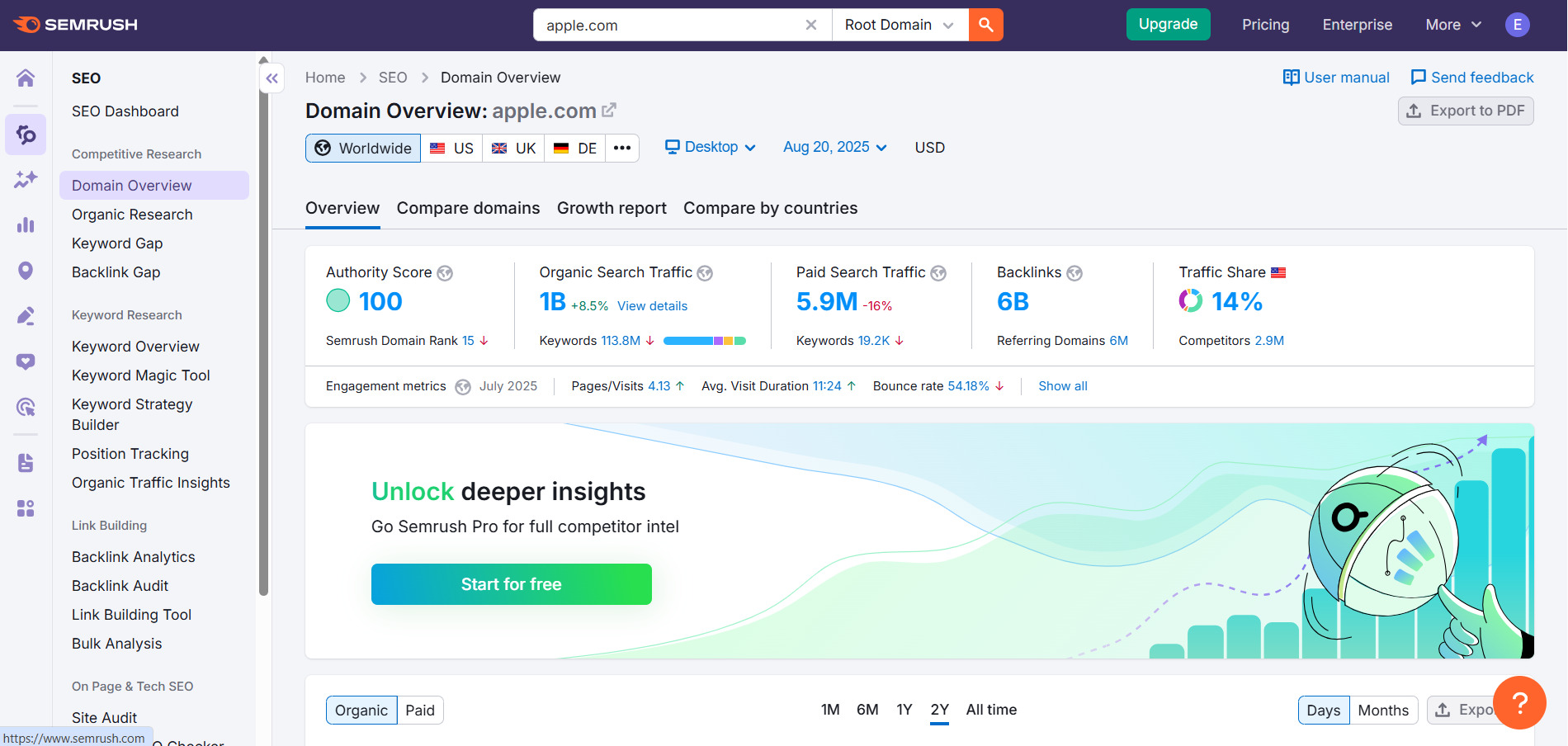
If links are toxic:
- Contact the webmaster and ask to remove/replace.
- If it’s a mass attack or ignored – use Google’s Disavow Tool (entire domains, not single URLs).
- Log everything in a risk register: when links appeared, actions taken, results.
A clean risk log shows Google your good faith and helps appeal penalties.
Toxicity checklist (minimum):
- domain with no organic traffic, sudden index spikes;
- irrelevant niche, unnatural placement in text;
- exact-match commercial anchor on a new page;
- dozens of similar links in 1–2 days.
This reduces SEO link building challenges and gives you a defense plan.
2) Expanding Content Strategy (Building “Link Magnets”)
The best way to bypass link building difficulties is to create content people naturally want to cite. This is the foundation of solving link building problems without buying links.
Formats that consistently earn links:
- Research & data: market studies, surveys, niche statistics;
- Tools & calculators: checkers, templates, interactive widgets;
- Comprehensive guides & hubs: a pillar page + 10–20 cluster articles;
- Comparisons & alternatives: “X vs Y,” “Best of 2025,” solution roundups;
- Local guides: same formats tailored for specific regions/cities.
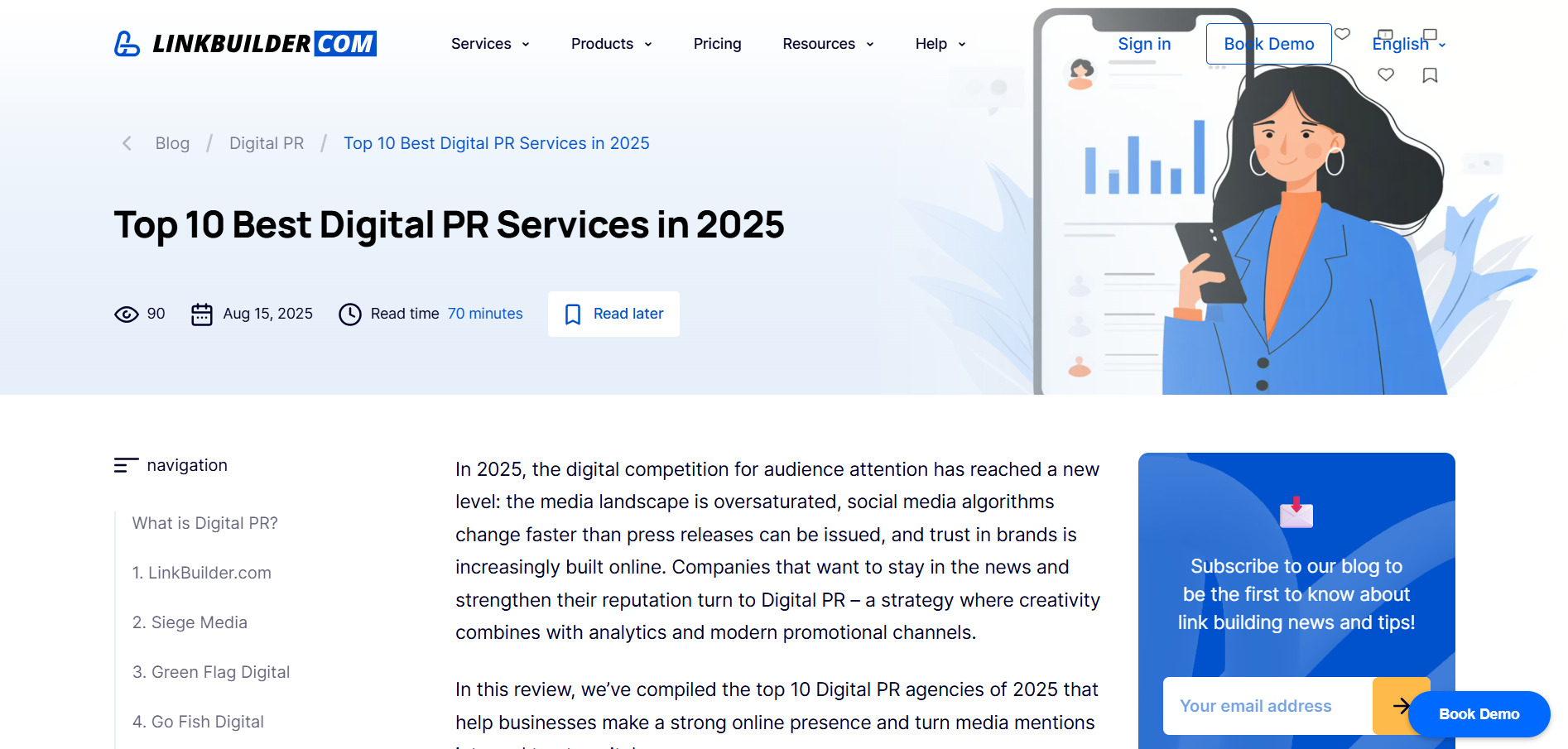
Implementation tips:
- Quarterly planning: release at least one “linkable asset” per quarter (study, tool, or hub).
- Distribution: pitch to media, communities, newsletters, partner blogs – outreach as “value for your readers,” not just “please link.”
- Freshness: add “last updated” dates, publish updates on schedule → fresh content earns extra links.
- Internal linking: connect each asset to related pages → grow RD while boosting UR of target URLs.
This is how you solve link building problems in competitive niches: by becoming a source, not just a requester.
3) Continuous Process Optimization (SOPs, Metrics, Experiments)
To avoid drowning in operations and repeating link building mistakes, your process must be formalized and measurable.
Standards & roles:
- SOPs for every stage: prospecting, scoring, outreach, QA, reporting;
- Clear roles & SLAs: who sources, who checks, who writes, who approves;
- Central donor registry: status (warm/neutral/cold), history of placements, conditions.
Key metrics (monthly):
- Cost per Link (CPL) by format (guest post, PR, forum);
- Reply rate / Placement rate by templates and niches;
- Time-to-link from first contact to placement;
- RD & organic growth on target URLs.
Iteration cycles:
- Bi-weekly: review emails based on real replies;
- Monthly: update donor priorities (closed, fatigued, new markets);
- Quarterly: refresh anchor strategy and risk audit.
Automation (lightweight):
- Outreach CRM (Streak, HubSpot) + integration with Hunter/Snov;
- Alerts (Slack/Telegram) for new links/indexation;
- Standardized UTM templates to track which guest posts actually drive traffic/conversions.
This removes common link building problems, speeds up fixes, and generates practical link building tips for your niche.
Long-term link building strategy is a cycle: toxic link control → link-attracting content → process optimization. This approach eliminates link building difficulties, ensures predictability, and answers how to overcome link building challenges without unnecessary risks.
Need help with link building? LinkBuilder.com offers solutions for any niche and budget.
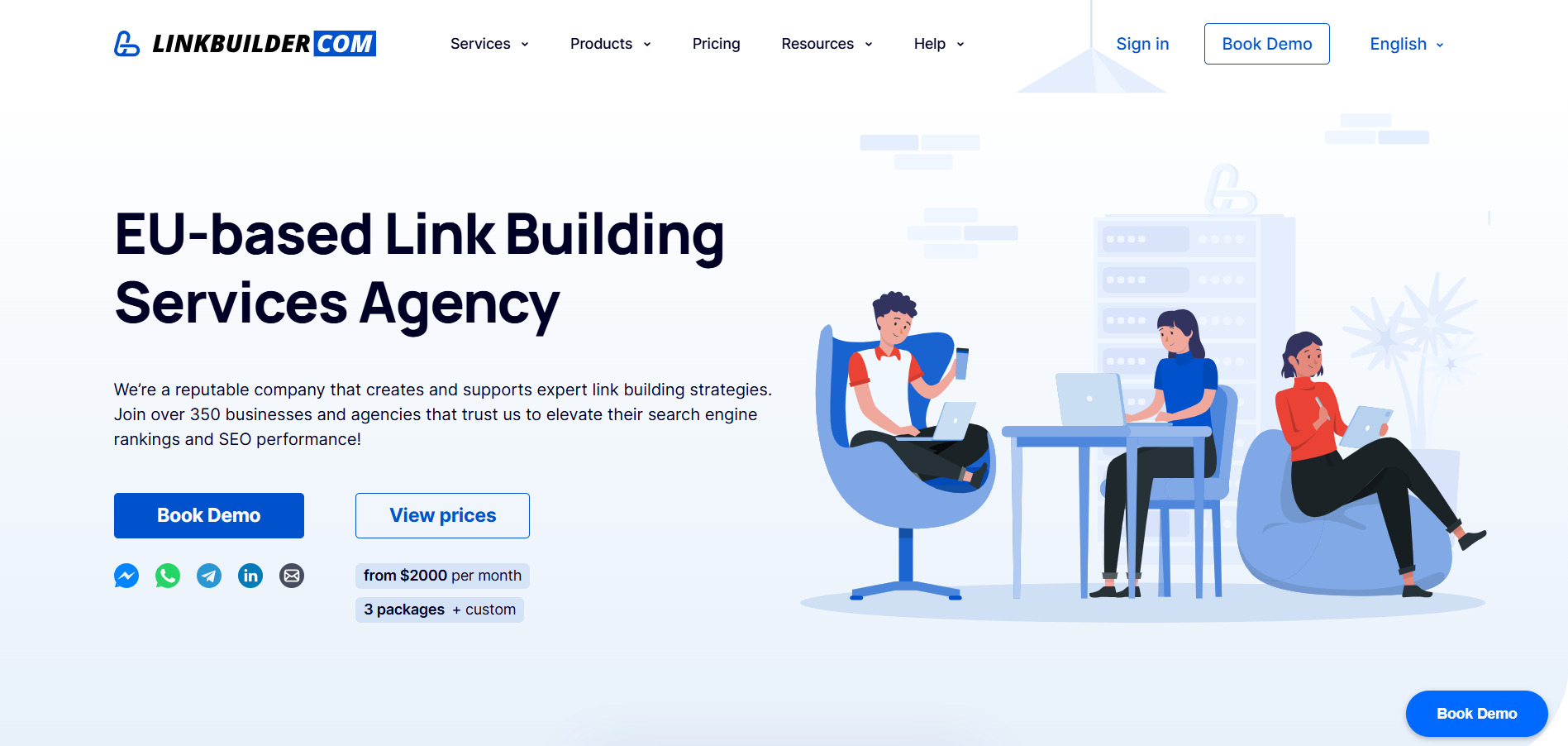
How LinkBuilder.com Helps Build Links
When link building challenges arise – from Google’s new algorithms to lack of quality donors or overheated niches – you need a partner who removes the grunt work and delivers predictable results. We handle the entire cycle: strategy → prospecting → outreach → placements → analytics & growth. This isn’t about “buy 10 links and forget,” but about how to do link building correctly: systematically, safely, and for long-term results.
Why Companies Choose Us
Save up to 70% on link costs
We work directly with webmasters and use our aggregated pool of negotiated prices – no middleman markups. This helps solve link building problems while saving budget.
300,000+ vetted donors
Our database includes only sites with organic traffic, topical relevance, clean history, and minimal risks. This removes many link building obstacles and ensures quality partners even in crowded niches.
10+ years of experience
We’ve lived through algorithm updates, filters, and spam waves. We know which tactics work and which trigger penalties. From link velocity and anchor strategy to format balance – we build processes that prevent link building mistakes.
Additionally: transparent reporting, predictive planning, SLAs for outreach & placements, anchor strategy support, and natural profile monitoring – everything that reduces risks and ensures effective link building.
Our Services
- Niche & Keyword Analysis
We start with deep research:
- semantic core (what your customers search for);
- intent mapping (buy, compare, learn);
- SERP difficulty & competitor level;
- backlink profiles of market leaders.
Result: a clear strategy: what types of links you need, in what volume and pace, to beat competitors.
- Donor Search & Verification
Not every site is link-worthy. We run a multi-step evaluation:
- filter by topic, language, region, tech;
- assess via our M-score (traffic, authority, branded queries, update frequency, outbound links, PBN signs);
- check content relevance to your themes.
Result: only live, quality sites that bring real SEO impact with low risk.
- Outreach & Negotiations
Once prospects are selected, we handle communication:
- craft personalized pitches (A/B tested) + follow-up sequences;
- negotiate placement formats: guest posts, mentions, reviews, in-article links, resource lists;
- ensure quality: no “sponsored” labels, reasonable outbound link counts, indexable pages.
Result: backlinks that look natural and comply with SEO guidelines.
- Reporting & Analytics
We don’t just place links – we prove their impact:
- monthly reports with domains, URLs, link types, anchors, DR/UR, and traffic;
- impact maps: target pages improved, domain profile dynamics, organic growth;
- recommendations: where to scale, which toxic links to disavow, which new formats to try.
Result: transparency and a clear link between backlinks and business growth.
Additional Services
- Digital PR – gain media mentions and coverage on major platforms through expert content, commentary, and native PR.
- Content for placements – we prepare articles, research, and reviews tailored to each platform’s format. This is part of Guest Posting (Outreach) service.
- Localization & Multiregion – adapt your strategy for different countries and languages, including crowd marketing and local media placements.
- Profile audit & cleanup (disavow) – analyze your backlink profile, detect spammy donors, and disavow them. Available as part of our standard Link Building service.
- Recovery after ranking drops – identify the causes of traffic and ranking loss, then design a recovery strategy. This often includes our HARO outreach service to rebuild trust via high-authority links.
How Our Process Works in Practice
- Preparation & strategy. Audit your backlink profile, define goals, compile a donor list, create an anchor policy, and set priorities.
- First wave of links. Launch outreach: quick placements on niche resources, initial guest posts, and mentions.
- Scaling. Raise platform quality, add PR links, balance anchor mix for a natural profile.
- Systemic work. Move to a consistent pace: explore new link opportunities, clean risks (toxic domains), expand coverage by topic and geography.
Which Metrics We Track
- DR/UR & Referring Domains (RD). Growth of domain authority and target pages via quality links.
- Anchor mix. Maintain natural distribution: 60–80% branded/URL, 10–20% partial match, up to 10% exact match.
- Link velocity. Steady, consistent growth to avoid penalties.
- Business metrics. Real impact: organic growth by clusters, leads/sales from target pages, cost per lead/order. Proof that we don’t just “raise DR,” but drive business growth.
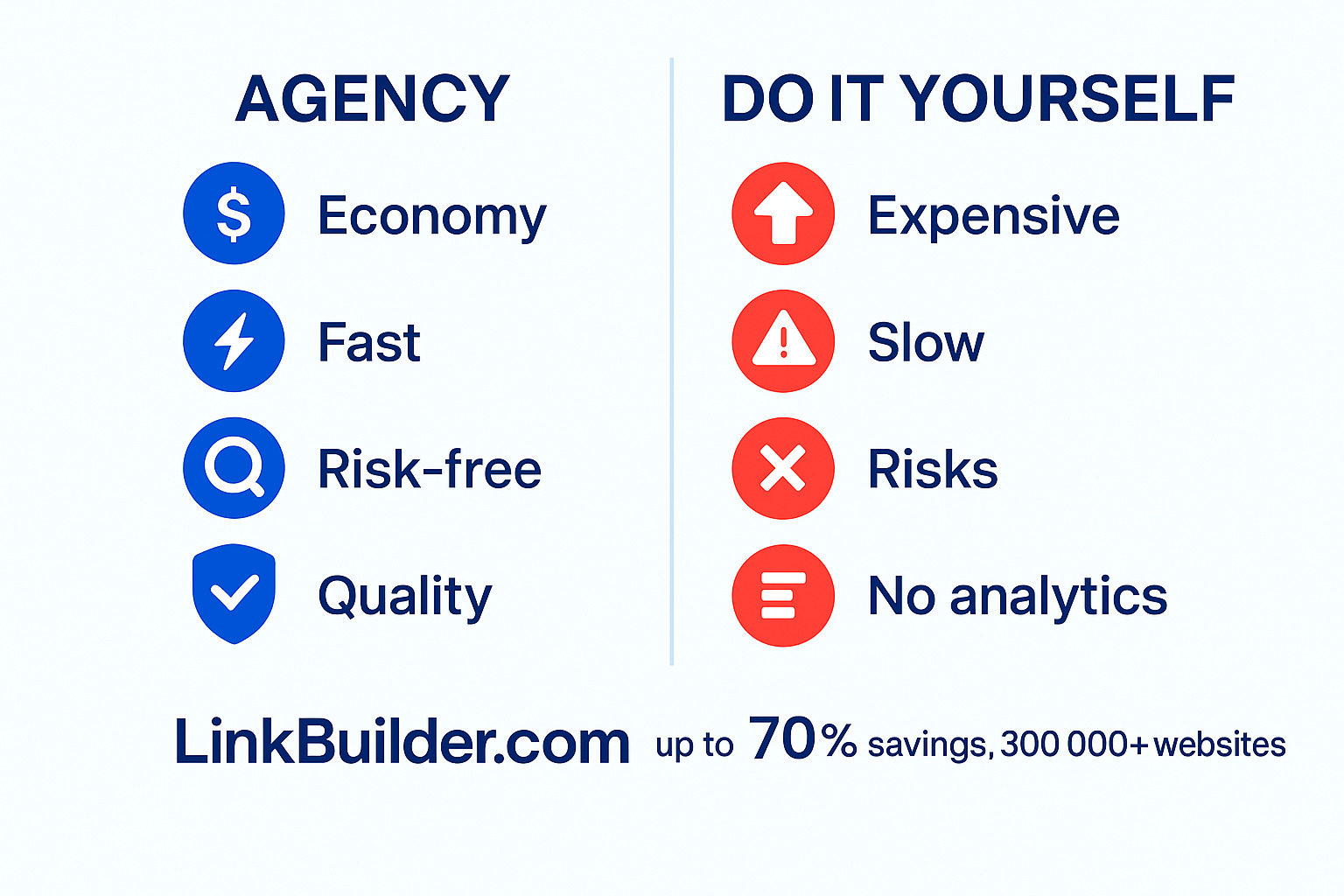
What You Get
- A clear, numbers-based strategy (no fluff).
- A steady flow of high-quality links without toxic spikes.
- Regular recommendations on avoiding mistakes and adapting to niche changes.
- Budget and time efficiency – we cut everything that doesn’t bring value.
Want to see where your weak spots are? Order link building from LinkBuilder.com and get a clear growth strategy.
Or if you prefer a personal discussion – book a call and we’ll prepare a tailored solution for your project.
Book a totally free consultation now at https://calendly.com/linkbuilder-com/demonstration
LinkBuilder.com: Real Client Promotion Cases
Case 1:
The client approached us in February 2025 with the goal of increasing organic traffic for a website in the “online photo editor” niche. At the time, the site generated around 40,000 monthly visitors. The client did not restrict the budget. Primary GEO: USA.
We developed a 4-month test strategy that included several key stages:
- Month 1: Forum work with a focus on do-follow links, as well as preparation for an outreach campaign aimed at building high-quality backlinks. Results: 40+ outreach placements and 400+ forum links.
- Month 2: Implementation of the HARO (Help a Reporter Out) strategy to secure PR links and placements from top-tier publications and journalists. Continued outreach and added Link Insertion. Results: 40+ outreach placements and 10+ HARO links.
- Month 3: Focus on high-quality outreach targeting domains with DR 35+ and organic traffic over 50K. Also added directory submissions. Results: 40+ outreach placements and 300+ directory links.
- Month 4: Use of more expensive, high-quality outreach placements. As expected, we doubled organic traffic to 80K/month.
Result: The site exceeded all client expectations: organic traffic doubled in 4 months, supported by improved rankings for target keywords. Project cost: ~$20K/month, or ~$80K total.
For the next stage (months 5–8), we plan to add links from Reddit and Quora to improve visibility in LLM systems (Large Language Models), enhancing semantic relevance and site authority. We also plan to integrate Digital PR. Over 12 months, the goal is to reach at least 120K monthly visitors and boost positions with long-term SEO strategies.
The client is fully satisfied with the results, and we continue working on SEO site optimization (site optimization) to further improve rankings.
Case 2:
The client approached us in September 2024 to increase organic traffic for a site in the “business mobile app” niche. At the time, the site had ~250 monthly visitors. The client set an initial budget of $5K/month, later raised to $10K/month after 2 months. Primary GEO: USA.
We built a 12-month strategy for the site:
- Month 1: Forum links in the US + preparation for an outreach campaign. Budget was small, so we started with affordable sites ($100–200). Results: 20+ outreach placements and 100+ forum links.
- Month 2: Repeated US forum links + continued outreach (only niche sites). Results: 20+ outreach placements and 100+ forum links.
- Month 3: Forum links in Europe + US (cost-effective expansion). Began mixing in higher-quality niche outreach placements. Results: 20+ outreach placements and 100+ forum links.
- Months 4–6: Forum links (US + Europe, premium countries) + business directories. Balanced with crowd links, submissions, and directories. Strategy: 20–30 outreach links monthly + supporting links.
- Months 7–10: Introduced HARO PR links and placements from authoritative outlets and journalists. Continued outreach + added Link Insertion in high-quality listicles. Results: 30+ outreach placements and 10+ HARO links.
- Months 11–12: Focus on highly trusted resources, including top-tier news portals with 1M+ traffic. Results: ~10 outreach placements. Largest donor cost: $6K.
The client was very satisfied: in 1 year, we grew traffic to 9,000/month and the site became #1 in its niche. Project cost: $10K/month ($110K/year, with first 2 months at $5K).
Next, we identified potential to reach 50K monthly traffic by adding more informational content (we primarily targeted commercial queries). Realistically, the site could achieve 30–40K monthly visitors with consistent publishing. Articles already started ranking and holding positions steadily.
Currently, we’re working on other projects for this client.
Case 3:
In August 2024, a client approached us with the goal of increasing organic traffic for a website dedicated to animal health reviews (an informational resource). At the start, the site had around 240K unique monthly visitors.
Target audience: USA.
Budget: $15K–20K per month.
Main goal: improve search visibility and grow organic traffic.
Developed Strategy
- Months 1–3: Building the foundation (backlink profile + content optimization)
- Worked with US-based niche forums to create a natural backlink profile.
- Prepared for an outreach campaign: selected niche and news platforms for placements.
- Created and published new articles using SEO copywriting targeted at high-potential queries.
- Implemented Link Insertion on relevant resources.
- Results: 20+ outreach placements, 100+ forum links, 15+ link insertions, 300+ forum mentions.
- Months 4–6: Scaling outreach and content
- Continued outreach with emphasis on niche platforms and Link Insertions.
- Increased forum link building and added submissions/directories for diversification.
- Published new SEO-optimized articles.
- Results: 25+ outreach placements, 100+ forum links, 20+ link insertions.
- Months 7–9: Expanding presence on social platforms
- Continued outreach and Link Insertion.
- Actively used Quora and Reddit to promote content and attract the target audience.
- Published additional SEO-optimized content.
- Results: 20+ outreach placements, 400+ mentions on Quora and Reddit.
- Months 10–12: Focus on social platforms & high-quality placements
- Focused on Quora and Reddit for brand awareness and engagement, including leveraging LLM (machine learning model) visibility trends.
- Continued niche outreach and reviews via Link Insertions.
- Results: 20+ outreach placements, 500+ mentions on Quora and Reddit.
Final Results
Over 12 months, the site’s organic traffic increased by 180K, reaching a total of 420K monthly unique visitors. The strategy of focusing on Reddit and Quora proved especially effective, as the content started being amplified by AI-driven algorithms, significantly boosting visibility.
Forecast & Next Steps
The site still has strong growth potential. So far, only ~40% of the semantic core has been covered, with high-frequency keywords (HF) deliberately postponed. The focus was on low- and mid-frequency queries (LF/MF), gradually adding HF queries through new content.
Next stage includes:
- Expanding backlink profile.
- Optimizing indexing of pages for better rankings (on-site SEO).
- Creating new content to cover the remaining semantic core.
- Updating existing articles.
- Increasing work with HF queries to reach the target of 1M unique visitors/month.
The site has every chance to achieve this ambitious goal thanks to a well-designed strategy, high-quality content, and a strong, sustainable backlink profile.
The Future of Link Building: What to Expect
Three key trends already reshaping the game – with actionable practices for doing link building right, improving link building, and solving link building problems long-term.
AI – Next-Level Prospecting and Outreach
What’s changing:
- Donor discovery is faster: models analyze topic, language, tone, and backlink naturalness across thousands of URLs in minutes.
- Outreach personalization scales: LLMs insert relevant hooks, quotes from donor content, and tailor subject lines to editorial style.
- Data quality improves: AI deduplicates databases, uncovers hidden contacts, flags traffic anomalies and PBN risks.
How to apply:
- AI donor scoring. Feed signals: branded vs non-branded traffic, content freshness, % of outbound commercial links, latent relevance.
- Hyper-personalized outreach. Generate 2–3 versions of each email with different hooks (quote from their article, new data, missing section).
- AI-powered anchor plan. Balanced brand/URL/partial/exact distribution with internal link map – avoiding link building mistakes like over-optimization.
- Thread & community clustering. AI finds active niche discussions – natural sources of mentions and backlinks.
AI doesn’t “build links for you” – it removes the grunt work. Expert strategy and quality control remain human responsibilities. At LinkBuilder.com you can order AI SEO GEO to automate link building tasks while keeping expert oversight.
Brand Matters More Than Ever
Why it’s critical:
- Branded queries and unlinked mentions are stronger trust signals.
- Algorithms weigh authorship, expertise, offline reputation, and citations.
- In competitive SERPs, brand strength reduces the need for aggressive link velocity – lowering risks and boosting resilience.
What to do:
- Replace “pure link buying” with Digital PR: data, rankings, reviews, research that media eagerly pick up.
- Build expert profiles: authorship, media quotes, speaking engagements, columns – the EEAT foundation.
- Monitor mentions: convert unlinked mentions into clickable links – a quick fix for link building problems.
- Grow presence in communities:Reddit, Quora, forums – steady referral traffic + reduced link building difficulties.
A strong brand = effective link building by itself. At LinkBuilder.com, we grow brands via Digital PR and HARO outreach: media features, expert mentions, and organic links that boost both SEO and reputation.
Content Quality – the Only Real Currency
Trend:
- “Information gain” is now a key metric: unique data, firsthand experience, original visuals.
- Generic AI summaries get devalued. Only content that solves user problems better than competitors earns backlinks.
What to implement:
- Publish research & micro-data: surveys, market snapshots, calculators, checklists.
- Build content hubs: comprehensive topic coverage for passive link earning.
- Provide proof: before/after case studies, screenshots, transparent methods.
- Use structural signals: schema, clear H2/H3, tables, FAQs – link building tips that raise your chance of inclusion in roundups.
Future-Readiness Checklist for Link Building
- AI tools ready – donor scoring, personalized email templates, risk monitoring.
- PR plan for branding – storylines, experts, KPIs for mentions & citations.
- Content strategy – not just guides, but research, analysis, case studies.
- Anchor map for 3–6 months – balanced distribution, no exact-match overload.
- Donor quality filter – no placements on link farms or suspicious traffic.
- Success metrics – RD growth, non-branded organic traffic, stable rankings.
- Regional plan B – local media, collaborations, localized content.
- Regular backlink audits – to remove toxic links and adjust strategy.
- Content → PR → community loop – articles become stories and discussions, easing link acquisition.
- Trained team – internal outreach playbook and link building standards to keep efficiency.
What This Means for You
The future of link building is not about “more links” – it’s about smarter, higher-quality work:
- AI support at every stage: donor scoring, personalization, risk detection.
- Brand as a trust multiplier: the stronger the brand, the easier it is to earn links.
- Content people want to link to: studies, comparisons, unique data that editors use naturally.
- System over sprints: processes, quality standards, and metrics that make strategies resilient to Google updates.
This reduces the root causes of link building problems and delivers effective, risk-free link building in 2025 and beyond.
What to Do Right Now – A Short Plan
- Run an express audit: check toxicity, link velocity, anchor diversity, DR/RD distribution.
- Set goals & metrics: RD by topic clusters, non-branded organic growth, share of brand mentions.
- Plan linkable assets: research, comparisons, mini-tools, guides.
- Segment donors and anchors, set a safe 3–6 month pace.
- Launch an outreach pipeline: personalization, A/B testing subject lines, track reply/placement rate.
- Measure & adjust: scale what brings links and traffic, cut what doesn’t.
- Partner with link building experts – LinkBuilder.com.
Conclusion
In short: link building is a system, not a one-off purchase. For sustainable results, you need niche research, link-worthy content, precise outreach, donor selection, consistent growth, and ongoing analytics. Because of this complexity, many wonder why link building feels so hard.
We’ve reviewed the main link building challenges, shared proven solutions, and given practical link building tips for safe and effective execution.
Yes, today’s barriers include stricter Google updates, naturalness requirements, intense competition, and unique difficulties for beginners. But all are solvable – if you understand the causes, catch mistakes early, and plan your strategy for the long term.
Want to focus on business growth while leaving the routine to professionals? We handle the full cycle: from strategy and prospecting to outreach, placements, and analytics. Order our comprehensive link building service and get predictable growth without unnecessary risks.
